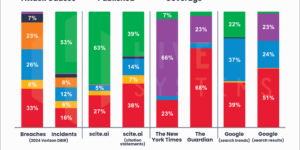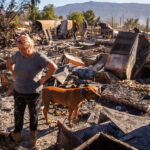Hurricane Matthew has thousands fleeing the U.S. Southeast where it’s expected to batter the coastline and threaten electricity supplies to more than 1 million people in Florida. Potential losses are seen as high as $15 billion.
Matthew is strengthening near the northwestern Bahamas with maximum sustained winds at 125 miles (200 kilometers) an hour and its eye is expected to move “very close” to the east coast of the Florida peninsula on Thursday evening, the U.S. National Hurricane Center said in an advisory at 5 a.m. New York time. The Category 3 storm closed the Buckeye oil terminal in Freeport, Bahamas, and could disrupt petroleum shipments along the U.S. East Coast.
“Matthew is likely to produce devastating impacts from storm surge, extreme winds, and heavy rains in the central and northwestern Bahamas today,” the latest advisory said, adding that it could have similar effects along portions of the east coast of Florida on Thursday evening.
The National Weather Service warned that winds, heavy rain and a storm surge could kill, wash out roads, cut communication links and cause outages lasting weeks. Evacuations could push storm damage to $10 billion to $15 billion, mainly in losses related to economic disruption, said Chuck Watson, a disaster modeler with Enki Research in Savannah, Georgia. Jonathan Adams and Jeffrey Flynn, analysts at Bloomberg Intelligence, projected losses to be closer to $5 billion, with Florida bearing the brunt.
“The big thing is that the Northeast gets spared, which is good and bad, because they actually needed the rain, and the Outer Banks too,” said Evan Duffey, a meteorologist at AccuWeather Inc. in State College, Pennsylvania. “Regardless, the Bahamas and Florida are going to see a deteriorating situation throughout the day. Landfall is still possible in Florida.”
South Carolina Governor Nikki Haley ordered the evacuation of Charleston and Beaufort counties, including their namesake cities. Florida has called on people to leave parts of Brevard, St. Lucie, Flagler and Duval counties.
Bear Brunt
Universal Insurance Holdings Inc., American International Group Inc., Progressive Corp. and Chubb Ltd. operate in Florida. RenaissanceRe Holdings Ltd. and Validus Holdings Ltd. are the catastrophe reinsurers in the region, Adams and Flynn wrote.
One nuclear facility, NextEra Energy Inc.’s Turkey Point in south Florida, is located just outside of the storm’s track. Nuclear operators NextEra Energy and Duke Energy Corp. said they would shut their reactors hours ahead of the onset of hurricane-force winds.
NextEra’s Florida Power & Light utility, the largest in Florida, said as many as 1.2 million customers could lose power.
Orange Crop
The risk to Florida’s orange crop is “minimal” because the worst weather will be along the coast, said Donald Keeney, a meteorologist with MDA Weather Services in Gaithersburg, Maryland.
The storm has begun to wind down in Haiti and eastern Cuba. Haiti will be vulnerable to landslides for days to come, Duffey said.
At least five people died, six were injured and one is missing so far in Haiti, according to a statement from its embassy in Washington. There hasn’t been a full assessment done yet because parts of the country have been cut off. Sunday’s presidential election has been postponed.
Category 4
Matthew was about 255 miles southeast of West Palm Beach, Florida, according to the National Hurricane Center advisory. It’s expected to become a Category 4 storm as it approaches the U.S. East Coast.
“The environment between the Bahamas and Florida is favorable for Matthew to restrengthen some time during the next couple of days,” Lixion Avila, a senior hurricane specialist at the center, wrote in an analysis.
On its current forecast track, Matthew should move up Florida’s east coast just offshore. Any deviation could mean the difference between massive devastation and essentially missing the state.
“It will likely take another day or so for the potential impacts of Matthew in the United States to fully clarify,” Daniel Brown, the Miami center’s warning-coordination meteorologist, wrote in an analysis Wednesday.
There is a chance the eye will come ashore near Cape Canaveral, home to NASA’s Kennedy Space Center, said Alan Reppert, a meteorologist with AccuWeather. If it does and it maintains its strength, it will be the first major hurricane to strike the U.S. since 2005, which is the longest the country has gone without such a strike since the 1850s.
Earlier forecasts called for an upper-level weather pattern to grab Matthew and drag it north up the U.S. East Coast, Duffey said. It looks now that the storm will drift away from the U.S. and back out to sea through the weekend, though some models have it looping back around to take another pass through the Bahamas and possibly even returning to Florida late next week.




















 Dear Elon and Vivek: Insurance Commissioners Urge DOGE to Ditch FIO
Dear Elon and Vivek: Insurance Commissioners Urge DOGE to Ditch FIO  Wildfire Smoke’s Health Risks Linger Long After Homes Escape Burning
Wildfire Smoke’s Health Risks Linger Long After Homes Escape Burning  Insurance Carrier Employees Are Bored; Most Boring Rankings Published
Insurance Carrier Employees Are Bored; Most Boring Rankings Published  Surviving the ‘Silver Tsunami’: Closing the Talent, Skills Gap in Underwriting
Surviving the ‘Silver Tsunami’: Closing the Talent, Skills Gap in Underwriting 






